The New York Antiquarian Book Fair 2017
Artist Collective
Galleria dell'Ariete Catalogue Collection, 1955-1978
7872-BK
8 5/8 x 6 1/4 in. (22 x 16 cm)
Collection of catalogues from the Galleria dell'Ariete, Milan. Founded in 1955 by Beatrice Monti della Corte, the Galleria dell’Ariete rapidly became one of the foremost galleries for contemporary art, introducing young Italian artists to American collectors and promoting contemporary American artists in Italy through associations with the galleries Kasmin and Waddington in London, and Leo Castelli and Betty Parsons in New York. Of 212 catalogues published, this set comprises 198, the most complete group ever assembled. List furnished upon request.
Price Upon Request
Artists Divers
Horacio Garcia Rossi, Julio Le Parc, Francois Morellet, Joel Stein, Francesco Sobrino, Jean Pierre Yveral. Group de recherche d'art visuel (GRAV), 1960-68.
, 1975
9062-PR
27 7/8 x 27 7/8 in. (71 x 71 cm)
Editor: Luciano Caramel.
Silkscreen print portfolio, signed and numbered; 148 pages. Published for the retrospective exhibition of the GRAV, a group of opto-kinetic artists, held at Serre Ratti, Lake Como, curated by L. Caramel.
Publisher: Electa, Milan. Organization and printing: Willi Zuco. Printer: Sam Villa.
Edition of 150 copies.
Sold
| 1975 | Zucker Art Books
Miroslaw Balka
Entering Paradise, 2003
3485-BK
15 3/4 x 15 1/8 in. (40 x 38.5 cm)
Bound book of 14 hard and soft ground etchings on natural Gampi and Rives de Lin papers. Text by Balka, letterpress. The artist paid homeless people on the streets of California to allow him to imprint their bare feet (mostly toes) on a copper plate to make these prints. The result is a startling collection of strong but subtle images that reflect the frailty of human existence. The edition is limited to 25 copies: 1–10 are bound books; numbers 11-25 are portfolios of loose pages. There are three sets of artist’s proofs. Published and printed by Edition Jacob Samuel, Santa Monica, CA. Edition of 20 copies
Sold
William Blake
Illustrations of the Book of Job, in Twenty-One Plates, Invented and Engraved by WIlliam Blake. London. Published by the Author & Mr. J. Linnell. 1825. (March 1826)., 1825
76
15 1/4 x 11 1/8 in. (39 x 28.5 cm)
Folio. Engraved title and 21 engravings on J WHATMAN / TURKEY MILL 1825. (Sheet size: c.15 x 10.5 Inch). Bound in ¾ brown morocco, printed title label with corrected address pasted to latter sheet. Small tear and corner repaired on first page, otherwise in fine condition.
The engravings for the Book of Job were commissioned formally by painter John Linnell (1792–1882) in an agreement of March 25, 1823. Despite a publication date of March 8, 1825 (the plates bear this date), they probably did not appear until early 1826 (the title label states “March, 1826â€) and were sold sporadically by Linnell and his heirs over the course of the next century. Indeed, the family sold 68 sets of India proof copies at Christie's in 1918. Sets of the Illustrations for the Book of Job —the last complete series of engravings completed before Blake's death in 1827—with a contemporary provenance are of the utmost rarity and sets sold during the artist's lifetime and within a month of publication, are in practical terms unknown. Always fascinated by the Book of Job, Blake's engravings were based on a series of watercolors executed between 1805 and 1806 for his patron Thomas Butts. The first edition was issued in 3 versions: 150 copies on laid India with the word 'Proof' as here, 65 copies on French paper with 'Proof', and 100 on Whatman paper with the word 'Proof' erased.
*This edition is the Whatman paper first edition.
“It was produced while Blake was still working on Jerusalem, his most obscure book; yet the Illustrations are Blake's most lucid; and they are the supreme example of his reading the Bible in its Spiritual Sense.†(S. Foster Damon, A Blake Dictionary [1965], pg. 217).
“This [Illustrations for the Book of Job] was the last work he completed, upon the merits of which he received the highest congratulations from the following Royal Academicians: Sir Thomas Lawrence... and many other artists of eminence.†(John Thomas Smith, [Joseph] Nollekens and His Times, 1829.
“Are there any greater illustrations to be found? They are Blake's most ambitious, most unchallengeable, series. His inspiration was never richer, and his execution never more consistently maintained.†(Osbert Burdett, William Blake, 1926).
Price Upon Request
Pierre Bonnard
Unique copy of Bonnard Lithographe. Monte Carlo: André Sauret, 1952
7521-BK
Claude Roger-Marx.
Quarto. 97 color and black-and-white lithographic illustrations after Bonnard by Mourlot Frères, text printed by l’Imprimerie Union, Paris, on Grand Vélin Renage; original lithographed wrappers bound in brown morocco in the Janseniste style, spine lettered in gilt, top edges gilt, brown calf doublures, moiré liners. Slipcase.
Bonnard scholar Claude Roger-Marx’s own unique copy of his magisterial catalogue raisonné of Pierre Bonnard’s lithographic work, extra-illustrated with 17 drawings and sketches and 19 prints and augmented by ephemera—36 items added by the author. List upon request.
The book is inscribed in pencil on the half-title, “En homage amical, Claude R-Marx.â€
The drawings range from an effervescent watercolor study for the celebrated poster France-Champagne (1891) to subtle pencil sketches of the artist’s wife Marthe in quiet interiors. Several cover sketches were for his nephew Charles Terrasse (1893–1982), who wrote a notable book on Bonnard and collaborated with him on the image for his piano piece Petites scènes familières, as illustrated. One other bookplate design is for Misia Sert, a pianist, art patron, and celebrated muse of the Nabis.
Provenance: Claude Roger-Mark (1888–1977), writer, composer, playwright, art critic, and art historian.
Price Upon Request
Irma Boom
Hommage Á Kelly, 2016
9633-BK
8 x 6 in. (20.3 x 15.2 cm)
The 1,216-page volume of pure color blocks concealed in a black box is a limited edition of 99 copies, signed and numbered in pencil.
Price Upon Request
Irma Boom
The Architecture of the Book, XXL Edition, 2010
09753-BK
13 1/2 x 17 5/8 in. (34.6 x 45 cm)
800 pages, 515 illustrations. Large soft cover book featuring an overview of Boom’s work housed in a grey box. Foreward by Rem Koolhaas.
Irma Boom has become one of the most widely renowned and respected book designers in the world today. Her often ingenious solutions to individual book productions have gained Boom international fame and her work is now collected by many leading museums such as the MoMA in New York.
Edition of 150 signed and numbered copies.
Price Upon Request
Georges Braque
Les Paroles transparentes (Transparent Words), 1955
4240-BK
18 x 14 in. (45.7 x 35.6 cm)
Text by Jean Paulhan.
Published by the association Les Bibliophiles de l'Union Française, Paris. First edition, one of 132 exemplars produced for the members of the club (no copies were for sale). Illustrated with 14 lithographs in tones of blue or brown on handmade Auvergne du Moulin Richard de Bas paper; four are hors-texte. 84 loose quires in wrappers, half vellum sleeve, and slipcase; the slipcase with very minor imperfections, otherwise excellent condition.
Signed on the justification page in pencil by Georges Braque, Jean Paulhan and Leon Léal (club's president). Provenance J.R. Abbey. References: Vallier 102; Rauch 109; Monod 8909.
Sold


Victor Brauner
Frappe de l'Echo, 1940
4471-BK
7 1/2 x 5 1/2 in. (19.1 x 14 cm)
Baruner’s first artist’s book. Includes one signed etching and aquatint. Text by Robert Rius.
Published by Éditions Surréalistes, Paris.
One of the author’s copies with an inscription by the surrealist poet Rius to his friend and artist, Wolfgang Paalen "Who went stealing one night all the remaining sculptures on Easter Island."
Edition of 70 copies
Price Upon Request
Robert Breer
Image Par Images, 1955
4388-BK
4 7/8 x 3 5/8 in. (12.5 x 9.1 cm)
Unpaginated "flip-book" consisting of approx. 100 leaves printed recto only with simple abstract forms and shapes, that, when flipped, create an animated sequence of abstract images emphasizing movement and playfulness. Published in conjunction with a groundbreaking exhibition "Le Mouvement" at the Galerie Denise René in 1955, the first Kinetic Art show in Paris. Breer (1926-2011), known as the "kinetic poet of the avant-garde", was renowned for his spearheading efforts in animation, utilizing both abstract as well as representational images throughout a career of over 50 years. He worked with avant-garde movements of his time and was associated with high modernism, fluxus, pop, and other genres.
Price Upon Request
Marcel Broodthaers
La Conqu√™te de l'espace, Atlas √” l”šÁ„Á´usage des artistes et des militaires, (The conquest of space, atlas for the use of artists and the military), 1975
6343-BK
1 7/16 x 15/16 in. (3.8 x 2.5 cm)
38 pages in slipcase, offset lithograph, containing silhouettes of a selection of 32 countries of the world shrunk to the same scale as Belgium, with no difference in size, arranged alphabetically. Published by Edition Lebeer Hossmann, Brussels and Hamburg. A tiny and most rare important final artist's book by Broodthaers that plays on language, scale, and function—it is transportable, but useless. This book was published shortly before the artist's unexpected death in 1976 thus all copies remain unsigned and are stamped “Estate M Broodthaers” and numbered by the publisher. Number 17 of 50 copies.
Price Upon Request
James Lee Byars
The One Page Book, 1972
7151-BK
12 x 8 7/16 in. (30.5 x 21.5 cm)
Cloth-covered board box containing one loose page as issued, with offset lithograph with one line of text, in miniscule font: "the philosophy of the one question". Sticker with title and press on cover; numbered on recto.
Published by Michael Werner, Cologne.
Edition of 50 copies.
Sold
Sigrid Calon
To the extend of / \ | & -, 2012
8222-BK
6 5/8 x 8 5/8 x 1 1/8 in. (17 x 22 x 3 cm)
Within the grid and beyond the pattern.
120 compositions in form & color, stencil printed on RISO.
This work arose out of Calon’s fascination with a grid; an embroidery grid, to be precise, with a minimal basic grating of 3 x 3 dots. With these dots, eight different (embroidery) stitches can be made.
When processed by the computer the stitches become lines and new graphic possibilities arise.
Lines can be repeated or joined to form a longer line. Lines can be rendered with outline or without.
Lines can be reproduced as form or as in-between form.
Lines and in-between forms can be put on top of, one another in layers.
Eight colors are employed in various combinations, with each combination appearing only once, generating 48 two-color combinations and 56 three-color combinations. Four-color combinations yield 72 options.
Signed and numbered.
Price Upon Request
Pia Camil
Xiuquilla/Blue milk weed, 2017
9561-BK
19 5/8 x 19 5/8 in. (50 x 50 cm)
Hand sewn cotton leporello book, with screenprinting, in cloth box with colophon.
Published by Zucker Art Books, NY. Edition of 8 variants, with 2 AP.
This is copy number 3
Each book is handmade from repurposed fabrics the artist found in Mexico City. Camil’s interventions include cutting shapes common in cloth making such as sleeves, collars, torsos, and recombining them in a colorful array, hand sewn into a double sided sequence. She designed small buttonholes in between the panels so the work can be hung as a banner as well, choosing either side. This sort of interaction between the work and the viewer is a key element throughout Camil’s oeuvre, which even includes works to be worn or walked on.
Pia Camil (b. 1980) lives and works in Mexico City. She has a BFA from the Rhode Island School of Design and an MFA from the Slade School of Fine Art, London. Her work has been exhibited internationally, with recent solo-exhibitions including A Pot for a Latch, New Museum, New York (2016); Skins, Contemporary Arts Center, Cincinnati (2015); The Little Dog Laughed, Blum & Poe, Los Angeles (2014); and Cuadrado Negro, Basque Museum Centre for Contemporary Art, Vitoria-Gasteiz, Spain (2013).
Price Upon Request
Marc Chagall
Les Sept péchés capitaux (Seven Deadly Sins), 1926
4235-BK
10 x 3 1/2 in. (25.5 x 9 cm)
15 etchings and one etching printed in sanguine, with two additional suites of the 15 etchings printed in sanguine (one on China paper and the other on Japan paper), with an original pen and ink sketch for one of the etchings. The text contains essays by Jean Giraudoux, Paul Morand, Pierre Mac Orlan, André Salmon, Max Jacob, Jacques de Lacretelle, and Joseph Kessel. Publisher: Simon Kra, Paris. Printed by Louis Fort. This is one of 15 deluxe copies on Japan paper, from an edition of 300. Numbered 4 on the justification with the drawing.
Price Upon Request
Raymundo Colares
Gibi, 1971
9592-OR
13 3/8 x 6 5/8 in. (34 x 17 cm)
Black and white cut paper bound in a triangle that opens up to a square. Handmade by the artist.
Signed and dated on the back.
Sold
William Copley
Story of My Life (Buchlein), 1965
4085-BK
4 1/4 x 5 in. (10.8 x 13 cm)
Artist’s book by jazz musician, with loose photocopies
Price Upon Request
Mark Dion
Fragments of travel, exploration and adventure, 2007
1879
10 1/4 x 12 5/8 in. (26 x 32.1 cm)
Paris: Christophe Daviet-Thery and XN editions
In his first book project Dion assumes the guise of an 18th or 19th century scientist who explores an unknown land (he kindly includes a buffalo leather pop-up map of this terra incognita) and exhaustively documents the native flora and fauna. The book is exquisitely constructed to convincingly carry out this fiction: pieces of paper are die cut and assembled and bound into the book to suggest an impromptu but thorough record of the explorer’s discoveries and observations. Contains twenty-seven bound-in lithographs, offset printed; six bound-in digital prints; five loose lithographs, offset printed; and two loose digital prints. Edition of 36 with 9 A.P.; deluxe editions 1-6 each include a unique drawing in colored pencil. Quarter bound in buffalo leather with Zerkall Nideggen paper and Zerkall German Ingres. Slipcase.
Edition of 6 deluxe copies with original drawing.
Sold
M.C. Escher
Regelmatige Vlakverdeling (Regular Division of the Plane), 1958
9522-BK
13 3/8 x 10 in. (34.1 x 25.5 cm)
Published by De Roos Foundation, Utrecht, Holland. 45 pages with six original woodcuts in black on gray wove paper, bound in cloth, including a separate suite of 6 plates in sanguine. Reference: Bool 1981, no.416–State 421.
Sold
M.C. Escher
De vreeselijke avonturen van Scholastica (The Terrible Adventures of Scholastica), 1933
9502-BK
12 5/8 x 9 3/8 in. (32.1 x 23.9 cm)
Published by C.A.J. van Dishoeck, Bussum, Holland.
Copy 274 from the regular edition of 288, containing 18 original woodcut prints by M.C. Escher (6 full-page plates, 10 majuscules, 1 tailpiece) and text by Jan (Johannes Lodewijk) Walch about the witch of Oudewater. Reference: Bool 1981, no. 88, State–205.
Sold
Alberto Giacometti
Douze Portraits du Celebre Orbandale, 1962
9563-BK
14 x 7 1/8 in. (35.7 x 18.4 cm)
Book comprising 12 original etchings on Rustic China paper.
Edition of 40 copies, numbered and signed by the artist and publisher, in it's original parchment cover. Published by Iliazd.
Reference: Lust No. 162-173
Alberto Giacometti's austere figures and portraits speak to human existence in a post-war era defined by alienation and uncertainty. Fascinated by the practice of representing the same sitter again and again to reveal the constant variability of a single person, Giacometti often took his wife, his mother, and his brother as subjects. In the series of 12 prints from which this work originates, the artist illustrates the Dada writer and editor Iliazd (Ilia Zdanevich), who was known as the architect, designer, and publisher of illustrated books of the School of Paris.
Sold
Andreas Gursky
Montparnasse, 1995
3668-BK
19 1/2 x 11 in. (49.5 x 28 cm)
Two square quarto vols., and oblong folio photo-reproduction. Original silver coated wrappers, printed in black, original silver coated portfolio, printed in black, all laid into the original silver papered box. A fine copy, with the print in fine condition. First edition, offset lithograph in color, on wove paper, with text book and book of reproduction of blown up images. Andreas Gursky is a German photographer best known for his vast color architectural landscapes. His point of view is often so far from the object that it is difficult to tell what it is. In this photograph, hundreds of windows simply become tiny squares and lose their meaning as architecture.
Sold
Stephan Köhler
Mexico, 2000
2093
7 3/8 x 20 in. (19 x 51 cm)
Collaboration with Clemens-Tobias Lange. Two volumes, bound in linen and silk with iron spine, housed in a wooden slipcase.
Published by CTL-Presse, Hamburg.
Each of the two volumes begins with excerpts from letters by Catalino (in Spanish with English translation), written from 1987–1994. Volume One tells of the hardships of farm life and the devastating effects of a hurricane. The images show daily life on the fields and in the small town of Tekit. Volume Two concerns the day’s fiesta, anticipating it in the letters, and the mixture of culture identification through photographs of processions, dances, and bullfights. The semi-transparent pages with Köhler’s photographs were printed in a darkroom on gelatin-coated Kozo Japanese paper handmade by the photographer in his Paper Bridge Mill in Gifu. 25 regular copies numbered 1–25 and 10 e.a. numbered 26–35. This copy is a special publisher’s copy, unnumbered.
Price Upon Request
Le Corbusier
Aircraft, 1935
3484-BK
9 7/8 x 7 5/8 in. (25.2 x 19.4 cm)
92 pages, 16 of text with 124 illustrations, most being photographs and some are reproduced drawings.
Published by The Studio, London.
Aircraft celebrates flight and casts the airplane as the pinnacle of modern technological achievement. The book captures the enthusiasm and ideas surrounding the aerial age. Le Corbusier opens the book by emphasizing the “ecstatic feeling†that flight produces in him. It is “symbol of the New Ageâ€, promising adventure, progress and wild possibility. He idealizes the aesthetics of the machines, too, which possess “clearness of function†(a core principle that underpinned Le Corbusier’s utopian architectural schemes). Le Corbusier’s captions are typically bold and uncompromising. The text that accompanies image 9, for example, reads: “The bird’s eye view … man will make use of it to conceive new aims. Cities will arise out of their ashes.â€
Reference: Fotografia Publica 132, p.81; Le Corbusier et le livre, p.122
Price Upon Request
Enzo Mari
Ogetto a Composizione Autocondotta (Self-composed object), 1959
7253-SC
10 x 10 x 1 15/16 in. (25.5 x 25.5 x 5 cm)
Wood, Glass and paint; signed in ink.
Publisher: Galleria del Deposito, Geneva. Edition of 100.
Using a series of three related and repeated three-dimensional elements of squares, triangles and rhombi with equal bases inside a square space with one rectangular bar, Enzo Mari produces a natural phenomena engaging the viewer's participation. The rotation of the square produces nearly infinite combinations as the pieces fall into place.
References: “Enzo Mari, modelli del realeâ€, Mazzotta, Milan, 1988, p. 46
Avossa Antonio and Francesca Picchi, “Enzo Mari, il lavoro al
centro â€, Electa, Milan, 1999, p. 73
Price Upon Request
Alphonse Marie Mucha
Documents Decoratifs, 1902
727
18 1/2 x 13 1/2 in. (47.3 x 34.3 cm)
The complete portfolio of four volumes comprise Mucha’s seminal style book; with a title page and text by Gabriel Mouray, and 72 stunning plates of a wide range of images, employing several printing techniques, including etching, heliogravure, and lithography among others; on wove paper, some on laid colored paper mounted on wove support sheet.
Published by Librairie Centrale des Beaux-Arts, Paris.
Some pale paper discoloration; loose, in original paper wrappers; the four volumes are contained in original paper-covered boards. A very fine and rare set.
Price Upon Request
Dieter Roth
Little Tentative Recipe, 1969
9441-BK
3 1/2 x 3 1/2 x 3 1/2 in. (8.8 x 8.8 x 8.8 cm)
Approx. 800 rotaprints in color, adhesive binding house in wooden box. Design and binding by G. Paw and J. Wells, Watford, England. Printed by students of the Watford College of Art according to a “recipe†by d. rot. Published by Edition Hansjörg Mayer Stuttgart. 100 unique pieces, numbered. Copy number 5 addressed to Rudolf Zwirner. DR. CW. 20 # 41.
Price Upon Request
Dieter Roth
bok 2b, 1961
928
12 5/8 x 12 5/8 in. (32 x 32 cm)
Approx. 50 pages, letterpress on double sheets, monotype setting, spiral binding.
Printed by Prentsmioja Jons Helgasonar, Reykjavik.
Published by forlag ed, Reykjavik.
100 copies numbered and signed; approx 10 copies destroyed; this is copy 74.
Signed and dated Reykjavik, 1961. DR. CW. 20 # 8
Price Upon Request
Dieter Roth
bok 1956-59, 1959
3667-BK
7 13/16 x 8 1/4 in. (20 x 21 cm)
70 pages and 4 double pages, miniature text letterpress. Spiral binding.
Printed by Chr. Christensen, Copenhagen.
Published by forlag ed, Reykiavik.
Approx. 150 signed copies. DR. CW. 20 # 6
Price Upon Request
Jean Saudé
Répertoire du goÁ»t moderne, No. 1-5, 1928-29
767
Five–volume set of folios, each with 40 loose color plates, some illustrated masterfully with the print technique pochoir, many highlighted with gold and silver. Designed by Georges Djo-Bourgeois. Hardcover portfolios with ribbon tie.
Published by Éditions Albert Lévy, Paris. Illustrations of French domestic interiors of the Art Deco period. Features the designs of Gabriel Guévrékian, Étienne Kohlmann, Robert Mallet-Stevens, Charlotte Perriand, Émile-Jacques Ruhlmann, Louis Sognot, and others. Important visual resource for interior designers and restorers.
Price Upon Request
Kamisaka Sekka
Kuromagae, 1901
7043-BK
7 1/16 x 9 13/16 in. (18 x 25 cm)
Two volumes illustrated with a total of one hundred color plates showing an assortment of colors and decorative designs for kimono.
Price Upon Request
Kate Shephard
Steiner Book Series 2, 2017
09801-BK
11 x 8 in. (27.9 x 20.3 cm)
16 pages of hand inked paper with 8 hand drawings. Edition 1 of 2. Signed and numbered on back cover.
Price Upon Request
Kate Shephard
Steiner Book Series 2, 2017
09811-BK
11 x 8 in. (27.9 x 20.3 cm)
16 pages of hand inked paper with 8 hand drawings Edition 1 of 1. Signed and numbered on back cover.
Price Upon Request
Isabella Sinclair
Indigenous Flowers of the Hawaiian Islands., 1885
779
First edition of first color plate book devoted to the flora of Hawaii. With 44 chromolithographed full-page plates with letterpress, printed by Leighton Brothers, beautifully bound. Published by Sampson Low, Marston, Searle, and Rivington, London.
Having studied botany in New Zealand, Sinclair began painting watercolors of the Hawaiian flora, carefully identifying each specimen with its botanical name as provided by Joseph Hooker, along with its natural habitat, its native name and other information. One of the most prized of Hawaiian books among collectors for its depictions of vanishing flora.
Price Upon Request
Josh Smith
Orange Book, 2015
7443-BK
11 x 8 1/2 in. (27.9 x 21.6 cm)
Spiral bound handmade book using stuff found on the street including discarded orange slices. Edition of only 6 copies, each unique, signed and numbered.
Price Upon Request


Josh Smith
Tornado Book, 2015
6422-BK
10 13/16 x 8 3/8 in. (27.5 x 21.4 cm)
On the streets of New York the artist found a discarded student project about the weather phenomenon of tornadoes. He appropriated the pages into an artist’s book, using the pink sheets from the student’s presentation for the cover. Smith then made photocopies of ingeniously manipulated rubber bands simulating tornado images. Staple bound. Unique book.
Price Upon Request
Joël Stein
Jeux de trames (Play of Patterns), 1962
8381-BK
18 x 15 1/4 in. (46 x 39 cm)
Portfolio with 10 reliefs in color, signed by the artist. Text by Pierre Schaeffer.
Published by Éditions Georges Visat et Cie, Paris.
Edition of 103 copies.
Price Upon Request
Sakai Hoitsu, Suzuki Sonoichi, and Nakano Sonoaki
Shiki no hana [Flowers of the Four Seasons], 1908
5311-BK
10 7/8 x 7 3/8 in. (27.7 x 18.8 cm)
10 volumes, octavo. 239 colored woodblock plates (232 double-page). Bound in fukuro toji style (concertina fold-out form), between original paper-covered boards; paper title label on upper cover of each volume, all within a single contemporary blue cloth slipcase, the slipcase within a modern blue cloth box, with blue morocco title label on spine.
One of Japan’s most stunning and complete presentations of botanicals, representing the four seasons through fruiting trees and flowers.
The work was published just a century after it was begun. It is so extensive and deals with so many more plants than the conventional flowers of the four seasons of most artists that it is botanical, as well as artistic in conception. The artist and poet Hoitsu (1761-1828) served in the Imperial court. He painted this work from living specimens, and was assisted by his disciple Sonoichi who supplemented the work. Upon Hoitsu’s death, it was continued and finished by Sonoaki (1833-1892). He rounded out the work to contain some 1000 examples. The opus was printed for the first time in 1908 when the printer Yamada Naosaburo, Kyoto, received permission to publish it.
Price Upon Request
Yves Tanguy
La Vie Immediate, 1932
4452-BK
7 7/8 x 6 1/8 in. (20 x 15.5 cm)
Paris, Editions des Cahiers Libres
First book with an etching by Tanguy (ref. Wittrock 1) for poems by Paul Eluard. There were only 22 copies of the book with the etching; 10 regular copies with text printed in the plate and 12 author’s copies on blue mauve paper with the etching on Japon nacré. This copy is one of the 12 author’s copies with a dedication by Paul Eluard to Theodore Fraenkel, a doctor and classmate of André Breton. Exceptional example of this rare book, bound in leather by A. Demules. Edition of 12.
Price Upon Request
Shuntaro Tanikawa
Picture Book (Ehon), 1956
3409-BK
10 x 9 5/8 in. (25.5 x 24.3 cm)
First edition. Limited edition of 300 copies. 20 tipped-in offset photographs (incl. one on front cover). Japanese text. Quarto. Original cloth binding. Unpaginated, 44 pp. Tokyo, Matoba Shobo, dated: Showa 31 [i.e. 1956].
Tanikawa Shuntaro (b. 1931) is possibly Japan's most highly regarded living poet. He has written over sixty books in addition to translating Charles Schulz's Peanuts and the Mother Goose rhymes into Japanese. This is his fourth book of poetry, which Tanikawa illustrated with his own photographs and privately published. Extremely rare. Unrecorded. No copy in OCLC. No copy in ALC.
Price Upon Request
Christopher Wool
Empire of the Goat, 1985
8452-BK
11 x 8 1/2 in. (27.9 x 21.6 cm)
Self published, the Wool’s second artist’s book, containing photocopies of paintings made in the early period of his oeuvre. Paper cover bound with Japanese string, bearing a red ink stamp of a goat on the cover. Signed, dated, and numbered in pencil. Edition of 33 copies. Mint condition.
Sold





































![Sakai Hoitsu, Suzuki Sonoichi, and Nakano Sonoaki, Shiki no hana [Flowers of the Four Seasons]
1908](/images/22206_h100w100gt.5.jpg)






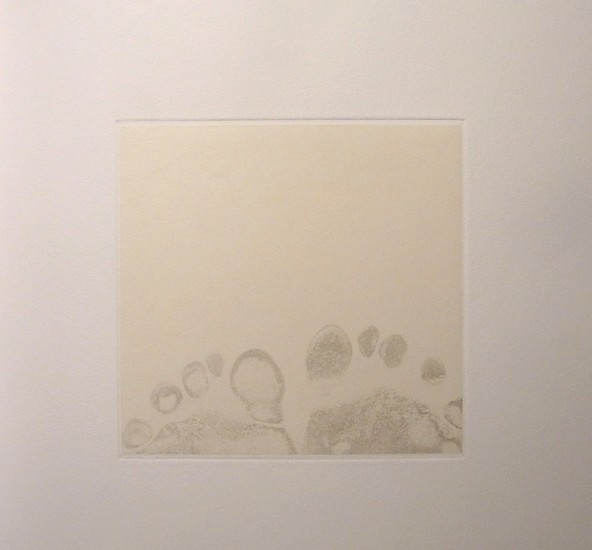






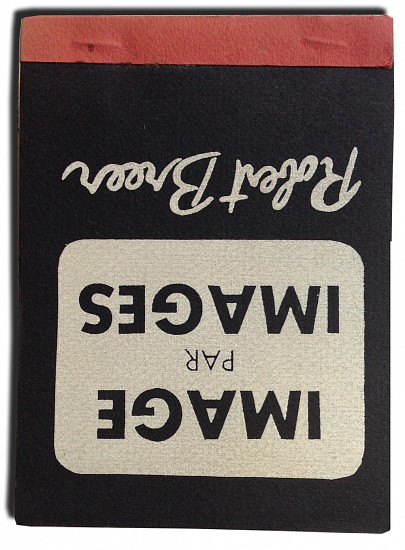
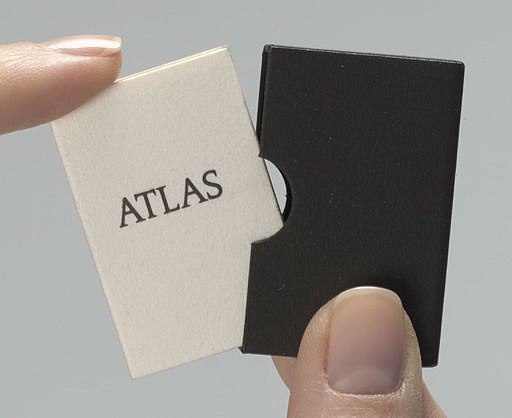
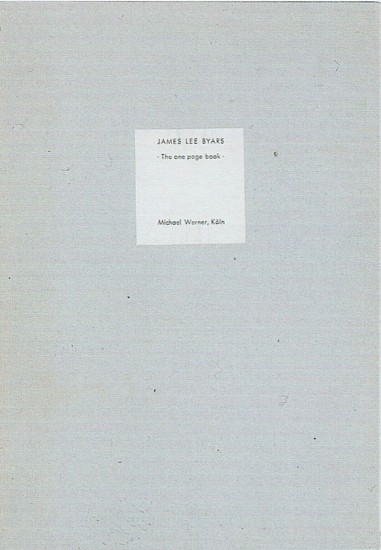

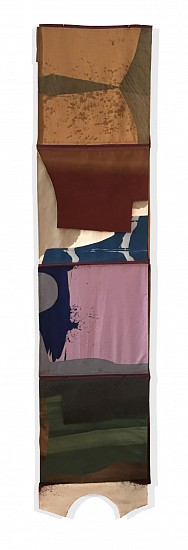
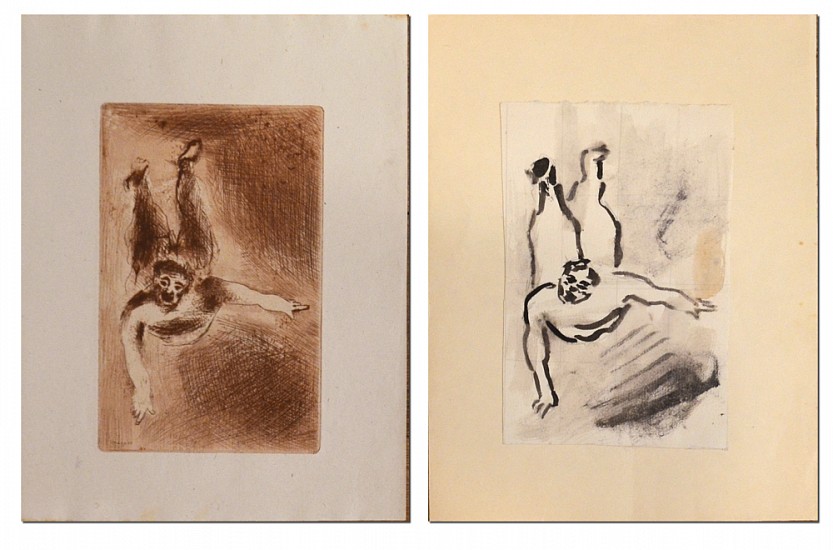
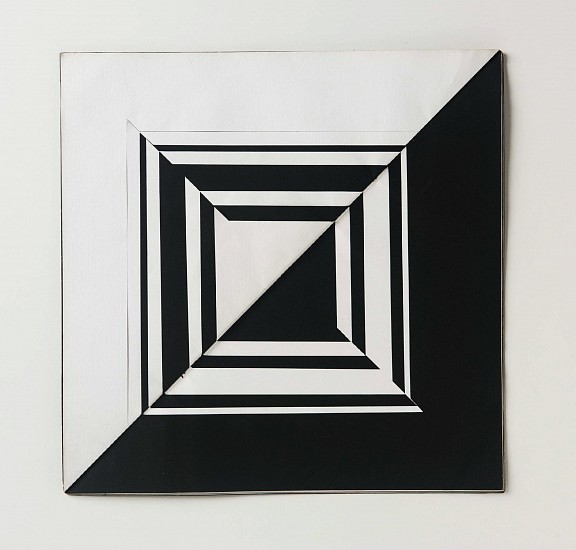

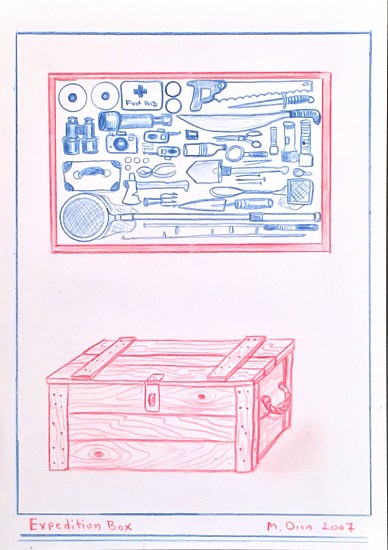


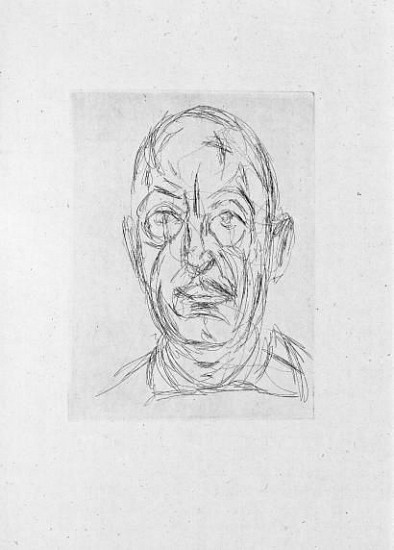

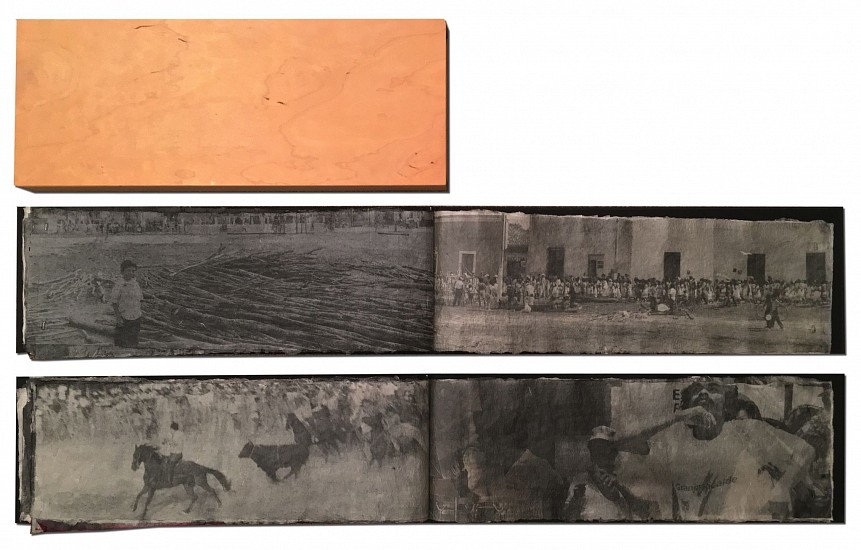
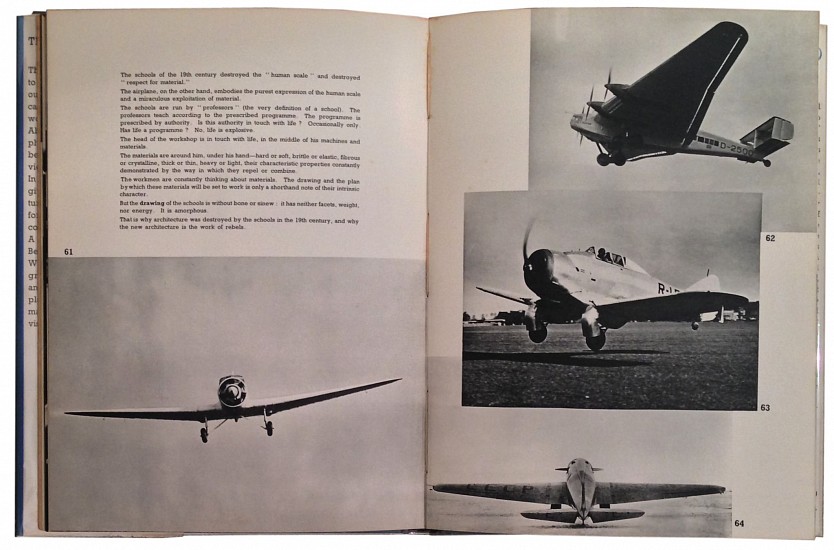
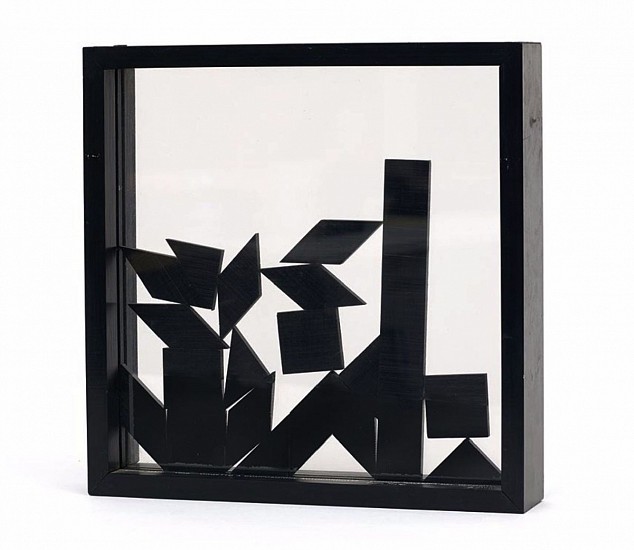
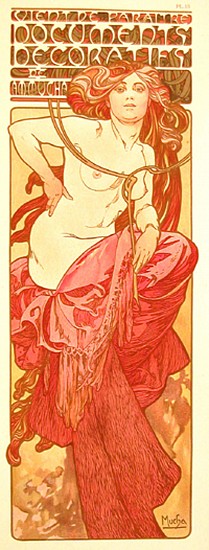

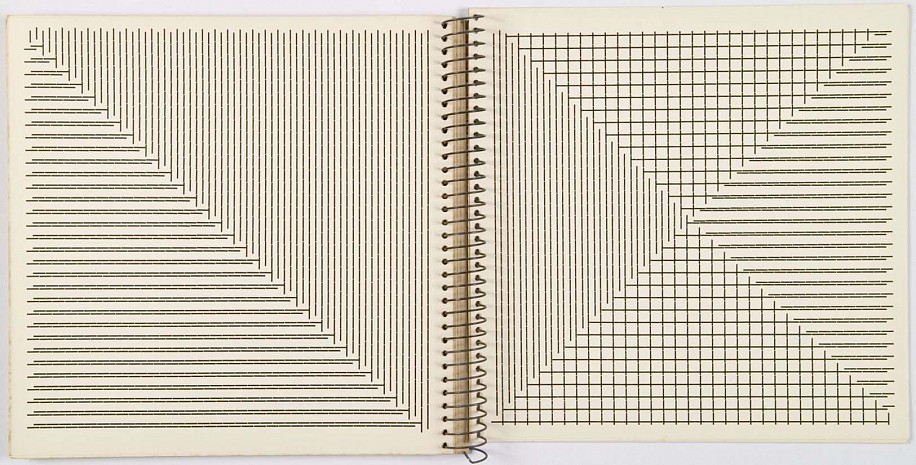
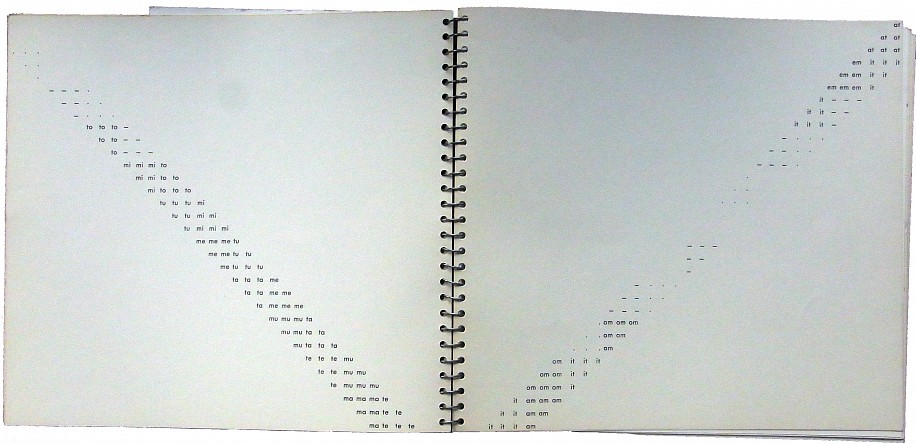

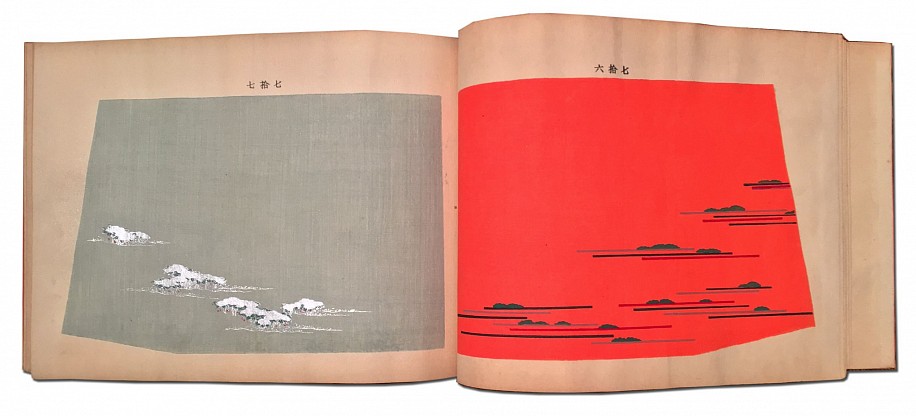

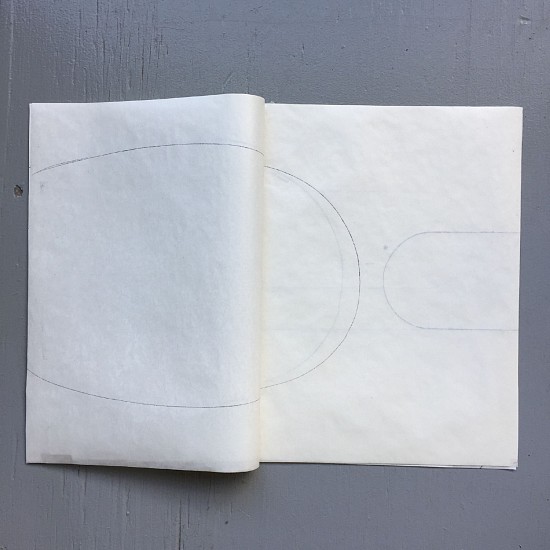




![Sakai Hoitsu, Suzuki Sonoichi, and Nakano Sonoaki, Shiki no hana [Flowers of the Four Seasons]
1908](/images/22206_h550w916gt.5.jpg)




